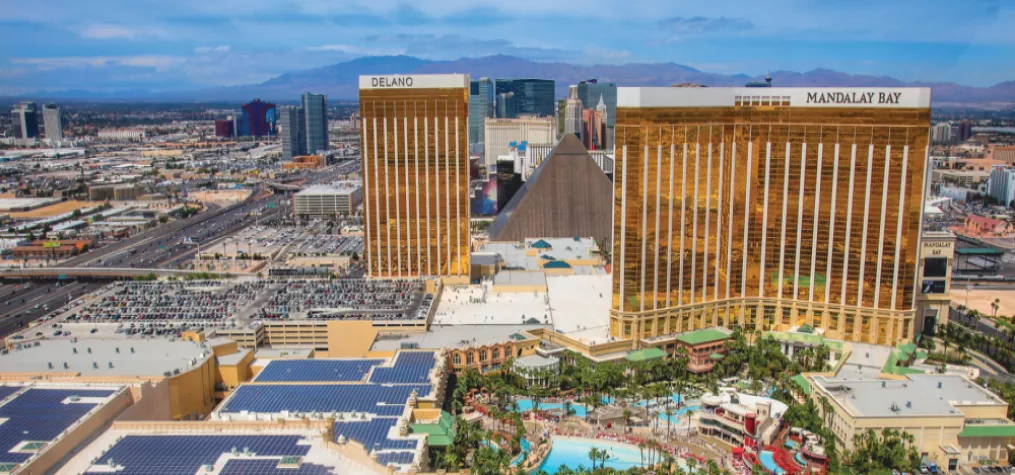The Future of Meetings: Ideas From IACC’s Brainstorming Session

The rules for meetings are in a state of flux. Various organizations, coalitions and task forces are working through the ramifications of holding events where addressing health and safety concerns is a top priority.
This means rethinking everything — from where to how to when you hold your meetings — within a new framework. That was the main tenet of this week’s IACC Americas Virtual Connect event, held May 18-21.
Virtual Connect sessions covered future meeting and conference venue space design, designing inclusive menus and delivering personalized food and beverage experiences, virtual site inspection technology, customer service and sales techniques and more. One of the most interesting sessions was a discussion on the future of meetings in a world of physical distancing.
Panelists Mike van der Vijver, owner of MindMeeting and Management Consulting, and Jessie States, director of MPI Academy, emphasized that, of course, face-to-face meetings will still happen. But many things will change.
Organizations and governing bodies in the meetings industry are producing guidelines on how to run meetings safely. States and van der Vijver discussed how planners should employ design thinking to determine how to produce engaging experiences within this new framework.
Key areas for consideration covered in the session included:
- On-site registration
- Education sessions
- Breaks and networking
- Meals
- 1-on-1 meetings
The session wasn’t meant to produce actionable results; rather, its goal was to identify areas that will need to change and kickstart creative thought processes based around event goals. Here are some of the topics that were pondered:
Virtual Check-In
Most of us have grown accustomed to self-check-in kiosks. But they may need to become a thing of the past — or be sanitized after each use, which could significantly slow the registration process. Low-touch or no-touch solutions to consider include technology similar to hotel keyless entry, using the guest’s mobile phone. Some events have been employing scannable QR codes to expedite event check-in for years now, and adoption of this technology will likely increase.
Waiting Times
It’s no longer going to be possible to pack everyone into a small space to register at the same time, dine at the same time or attend a crowded session. Even a holding room won’t work anymore. This is going to result in longer wait times, and the need to find more space to keep people the required 6 feet apart. How do you keep people entertained — and most importantly, engaged with your brand — during this time? Panelists predicted this may be through polling or surveying, pushing content to their devices, remote chats or 1:1s, or virtual Q&A sessions conducted solely through personal devices.
Health and Safety Precautions
Event organizers are already discussing whether to implement temperature checks and deny entrance to anyone with a fever. One suggestion was to team up with a local hospital or to hire nursing or medical staff to conduct these procedures at events. We’ve already established that for larger events, there will be waiting times, so these screenings could potentially be done as part of pre-check-in.
Cleaning and sanitation requirements will require prevalent handwashing and hand sanitizing stations. Van der Vijver suggested using mechanical technology in the form of drones, robots, or a conveyor belt similar to that in a sushi boat restaurant, where hand sanitizer is moved from one place to another in a loop, to safely provide sanitation to larger numbers of people. (Obviously, more thought would need to be put into the safe execution of these ideas - how to avoid having to depress a lever to get the sanitizer, for example.)
Education Sessions
Rooms that formerly had space for plenty of attendees are tight with the new physical distancing rules, and small rooms will now be even less useful.
During the rise of hybrid events a decade ago, many incorporated hubs, allowing people to connect in small groups from multiple locations. We may see a resurgence in this trend.The hubs can be connected at some times, and have their own activities during others. Multi-room and even multi-venue networking may end up being the wave of the future — with additional networking to connect remote attendees for a fully hybrid event, as PSAV has laid out in its recently released MeetSAFE guidelines.
The need for sanitation will impact both meeting rooms and the overall event agenda. If people are moving from session to session, event organizers will need to plan ample time between sessions for rooms to be sanitized, including tables, chairs, and any equipment that attendees, speakers or staff may be using.
Amplification will require some thought as well. If you aren’t passing a microphone around or throwing a box, how will attendees be able to ask questions and share stories? Will they need to push a button to talk? If you have a microphone on a stand, how far away should someone stand from it — and how do you ensure it’s kept clean?
Breaks and Networking
Van der Vijver predicted that self-service grab-and-go food options for breaks — think buckets of soda cans, baskets of granola bars, chips and candy — will become a thing of the past. Even takeaway items will need to be served by staff. All breaks that serve any food or beverages whatsoever will need to have servers.
For receptions, panelists suggested inviting people in at staggered times, using different paths and different spaces. They noted that handwashing and sanitation stations will also need to be set up in key locations that will also not cause crowding. Suggestions included using tape, spray chalk or signs to help people stay aware of their surroundings and show them where they should be.
Any activity where unscheduled networking is the objective will be among the most difficult to plan. How do you keep the ability for human-to-human interaction in place?
Traffic Flow
The big question remains: how do we continue to help people engage with each other when they are six feet apart? Both the room layout and the traffic flow within that room will be important. Planners will need to map ingress and egress routes and times, and figure out how to communicate what this movement should look like to their attendees. This could be using tape, chalk, signs, or, in larger spaces, human arrows or even drones.
Documentation and Communication
To protect your organization (and yourself) from liability, you’ll need to document exactly when people are sanitizing themselves and/or any equipment they may be using, when they're coming through each part of the event facility, and that they're following the procedures that you have in place. This extends from the venue through suppliers, partners, the event organizer and attendees — as there’s still a grey area with regard to liability. Think of this documentation and communication as the equivalent of what you would put together for an emergency preparedness or crisis management plan.
Attendees nervous about COVID-19 will not come to your event if they don’t feel confident you are taking every possible precaution to keep them safe. As a result, communicating information around your procedures, rules and expectations ahead of time will become even more important.
While no one knows exactly what the future of meetings will hold, now is the perfect time to challenge your organizations, supplier partners and yourselves to think creatively.
Image by Gerd Altmann from Pixabay
Do you have any creative solutions in the works that address any of the areas discussed here? If so, we’d love to hear them! Let us know in the comments below or share on Twitter, Facebook or LinkedIn.


Add new comment